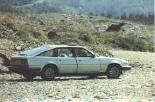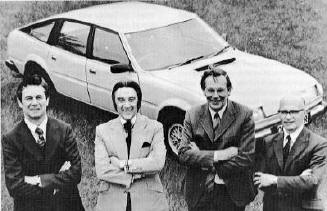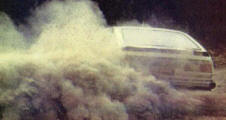The Rover SD1 Story
Rover 825SD 800 Coupe 825i SD1 and Land Rover Web Site
![]()
|
|
The lost opportunity?
The other sections contain a short history of each model and some personal observations about them.
|
|
These Rovers could have been one of the best cars ever produced. Launched in the seventies it was a radical departure in design for the Rover Company. Both Rover and Triumph had started work on a replacement for their range of cars before the amalgamation had really started. The Rover Specialist Division 1 or as it later became known the SD1 , was a car developed using the combined skills of the Rover and Triumph engineering teams which had by this time been amalgamated into the group. David Bache, Gordon Bashford (SD1 Design), Spen King (Director of Engineering), were among those responsible for this project. Replacing the Rover (P6) 2000/2200/3500 cars and the Triumph 2000/2500/2.5PI, the SD1 was a landmark model. The design was modern even futuristic at the time and the car was based on proven straightforward mechanical running gear designs, with the styling having more than a hint of a Ferrari Daytona. At the time it was quite an advanced car. Indeed from an appearance point of view even now you could say it still looks a fairly modern car. The SD1 (Special Developments 1) replaced the Rover 2000/2200 and the Triumph 2000/2500 in the BL range of models. Engines fitted to these cars included the V8 carried over from the P6 series and a brand new 6 cylinder design developed initially by Triumph engineers then being re-designed for the SD1. The six-cylinder engine, started off being developed using components from the Triumph Dolomite engine, as this link to Paul Bridger's excellent page shows, the Triumph team produced engines in 2.3 and 2.6 litre forms and were so good they actually produced about 150 bhp in 2.6 form at a very early and conservative stage in development. This was very close to the output of the V8 also used in the car. Because "the powers that be" in the company at this time had a very curious idea about not wanting to produce a vehicle that took full advantage of the potential power of the V8 and had strangled it down to about 155 bhp (even less than it had been in the smaller P6), the 6 cylinder was reduced in power to a weedy 123 bhp for the 2.3 and 136 bhp for the 2.6 by fitting milder cams. So in both cases excellent engines were hampered by muddled thinking. The engine was an outstanding design that never stood a chance, capable of high mileages, smooth as silk and very robust. But the 6 cylinder engine suffered a design fault which was known about very early on and because of the shambolic way the group was run nothing was ever done to correct it. Regular oil and filter changes were vital for this engine (in fact even with regular servicing, problems could still occur even at low mileages.) This wasn't helped by the location of the oil filter itself which was almost impossible to gain access to without taking off the drive belt and swinging the power steering pump out of the way, consequently it was a job that tended to be skipped even at the main dealers. The oil supply to the cylinder head/camshaft came up through a gallery in the block. At the top surface it had what looked rather like one of those brass paper punch hole binder clips that was in fact a non-return / pressure reducing valve. Any build up of sludge in the oil, blocked the supply at this point starving the camshaft bearings. The result was that the camshaft seized and the valves came into contact with the pistons. Nasty and expensive to rectify. And all entirely avoidable as proved by a simple after market add-on kit. Of course it would have meant spending a little money to correct the problem in production and in the climate of the time with government interference, the general malaise of British industry nothing was done. It was just another factor that sent the reputation of Rover cars to rock bottom. Other problems I suffered with these cars were mostly electrical. Faults were almost always tracked down faulty electrical connectors, spade connectors, plugs and sockets on the wiring harness. Often the cables had a poor contact where the terminals were crimped. The automatic choke and electric windows / switches suffered from this especially. So if you have these problems with the SD1 it is worth checking this out before buying replacement parts. Now for the history of the SD1: Paul Bridger's SD1 story
Wild
Rover article on an SD1rally car A few pictures of the SD1s I have owned
Nick Wright's
A very
comprehensive account of the SD1 written by Keith Adams can be found here
People who have owned raced or rallied SD1's.
|












